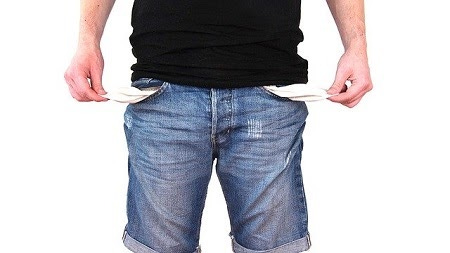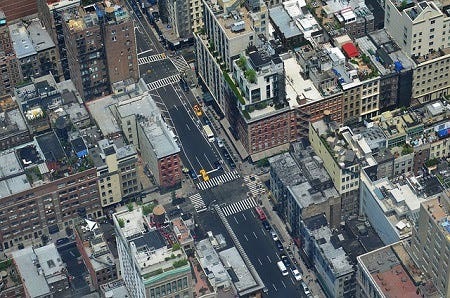A stingy stimulus, inequality in the age of COVID-19, and insurance.
This one's sure to make you pissed off about money.
Good morning! Does anyone actually care that it’s Friday? Here’s the news:
Steve Mnuchin is hoping $1,200 will get you by for 10 weeks: don’t mind all the businesses shuttering their doors or the millions of applications for unemployment, everyone will be fine, right? Right? Please tell me that’s right.
Coronavirus numbers in light of New York City’s inequality: which can be used to extrapolate quite a bit on inequality in America as a whole!
It’s likely that over 9 million Americans lost their employer-provided healthcare: with 22 million Americans applying for unemployment, it should come as no shock that so many are out of luck when it comes to their insurance.
Have a great weekend, but before then, let’s take a look at what’s been happening.
STIMULUS
Mnuchin Is, Unsurprisingly, Totally Out of Touch Regarding Stimulus Checks

Steven Mnuchin thinks the latest coronavirus package will last them for up to ten weeks. This story is actually a few weeks old, but we noticed a lot of people saying they used their coronavirus checks to either pay for food and other necessities or, even more commonly, to relieve debt.
Steve Mnuchin is Worth $400 Million
When the folks in charge of major economic decisions like this are drowning in money, it really makes you wonder if they have any sense of how much regular living can cost you.
Mnuchin had a long career of working with Goldman Sachs. After that, a variety of hedge funds. The guy is loaded: around $400 million, estimates figure.
That’s exactly why we should be a bit skeptical about his opinion that $1,200 relief checks should hold families over for 10 weeks.
To be fair: he was talking about the entire package, which includes small business loans and enhanced unemployment payments. But with 22 million Americans having now filed for unemployment benefits, many of those unemployment systems are being overwhelmed, unable to get people the cash they need to stay afloat.
Breaking Down Numbers
The calculation for the amount of the stimulus check was roughly based on the federal minimum wage, or $7.50 an hour, over one month. One month of minimum wage wouldn’t be adequate for plenty of people (including people who have to survive on that normally), but it’s certainly not enough for two and a half months.
By comparison, consider that Canada’s robust refinement of their unemployment insurance system allows residents to apply for C$2,000 every month for the next four months.
Bottom line: Mnuchin’s framing is woefully out of touch, but all of this has us thinking that this says more about the private debt crisis than anything.
INEQUALITY
Coronavirus Deaths Paints a Grisly Picture of Inequality

In New York, the death rate for COVID-19 black and Latino New Yorkers is just about twice that of White New Yorkers, according to data released by the city. There’s an economic element to this, too: the five ZIP codes with the highest rates of coronavirus have an average per capita income of $26,708, while the residents in the five ZIP codes with the lowest rates had an average income of $118,166, according to The Intercept.
An Unfortunate Reality
Like many issues with society, the corona crisis is exposing some of the most disappointing facts about our country.
These numbers aren’t all that shocking if we’re being honest: poor people and people of color tend to have shorter lifespans and suffer worse health outcomes in New York City.
These numbers are consistent with other numbers around the country, including Louisiana, Illinois, Milwaukee, and Michigan. Early national data from the Centers for Disease Control and Prevention indicates similar woes.
While race does often correlate to poverty, including all the issues that come with it (lack of sick leave, poor physical health, exposure to pollution), there’s no conclusive data indicating that race should be used as the framework for understanding the coronavirus numbers.
Poverty Puts People At Risk
Conversations about how race and class are connected to one another aside, it’s obvious that your class has an impact on the likelihood of your exposure to coronavirus.
Poor people in urban areas tend to live in more densely populated conditions, with crowded homes, crowded transportation, and crowded stores.
Working-class jobs tend to be of the kind of nature that doesn’t allow for remote work options, meaning that the people who are working “essential jobs” that often offer inadequate pay are more likely to get sick.
Pre-existing health conditions also seem to increase the risk of becoming severely ill. Some of these conditions, like diabetes, have also been found to be more common among lower-income populations.
Bottom line: It shouldn’t take a global pandemic for the country to have candid conversations about race and inequality, but hey, that’s where we’re at.
HEALTHCARE
9.2 Million Workers Have Likely Lost Their Employer-Provided Healthcare Cover

Health insurance. As we wrap up a heated Democratic primary where it was a central topic, many are still left wondering what the best route is. Now, the 9.2 million workers who have likely lost their employer-provided healthcare coverage shines a light on just how dire the problem really is.
That’s Really, Really Bad
This is a global health emergency. Now, a lot of Americans aren’t sure if they’ll be able to afford healthcare in the event that they do get sick.
You may remember a story about an uninsured teenager who died from COVID-19; as it turns out, the story wasn’t entirely true and was reported because of a mistranslation. Still, it felt like something that could be true, because in a world where urgent care clinics can legally deny treatment to the uninsured, it could be.
Understanding the cost of COVID-19 healthcare isn’t easy. While testing is (thankfully) free for all Americans, hospital bills can stack up even if you have insurance.
Independent nonprofit FAIR Health estimates those who are uninsured could pay between $42,486 and $74,310.
The same report also estimates a cost of $21,936 to $38,755 for those who do have insurance and are using in-network providers.
These costs may apply for more extreme hospitalization needs, as the nonprofit Kaiser Family Foundation estimates $13,297 for less severe hospitalizations.
The Trump administration’s stimulus bill includes $100 billion injected into the healthcare system. Any hospitals that take that grant money must agree to no “surprise” billing for patients. It’s unclear how much or little this will alleviate the crisis of paying for coronavirus-related treatments.
A Look at Policy
What would things look like if our insurance system were structured differently?
During the last primary debate between Joe Biden and Bernie Sanders, Biden notably quipped “with all due respect for Medicare for All, you have a single-payer system in Italy — it doesn’t work there.”
Part of why Italy was hit so hard is that they have the second-oldest population on Earth and coronavirus is particularly deadly for the elderly. It almost makes one wonder; how come Italy’s elderly survived for so long, anyway?
It’s also the case that coronavirus is particularly deadly for those with pre-existing conditions. If people are afraid to get treatment for underlying medical issues because of costs, it seems plausible that those conditions will worsen, putting them at greater risk for coronavirus or illnesses generally. A more healthy population to start with is a good way to protect against a pandemic.
This may only get some people as far as, “sure, but why not just have a public option then?” I don’t know about you, but all of this has been a lesson in how easy it is for non-universal programs to suddenly become overwhelmed and incapacitated (case in point: state unemployment offices around the country). 9.2 million people suddenly having to sign up for a public option could overload a system like that if it isn’t ready. It’s also a big ask to tell people who have lost their jobs that they have to sign up for unemployment benefits and some kind of new insurance when you could just give every single citizen that insurance from the get-go.
Bottom line: We won’t rehash every argument for going the M4A route instead of a public option (here’s a good article that sums up our thoughts, though), but it’s obvious that tying health insurance to employment isn’t working.
END OF THE LINE...
That’s it for today.

That’s what we’ve got. Remember, we’re only able to do this every day because of readers like you. Drop your friends and family a referral link and help us grow. We’d truly appreciate it.
Have a good one,
The Bread Line
we’re listening to:



